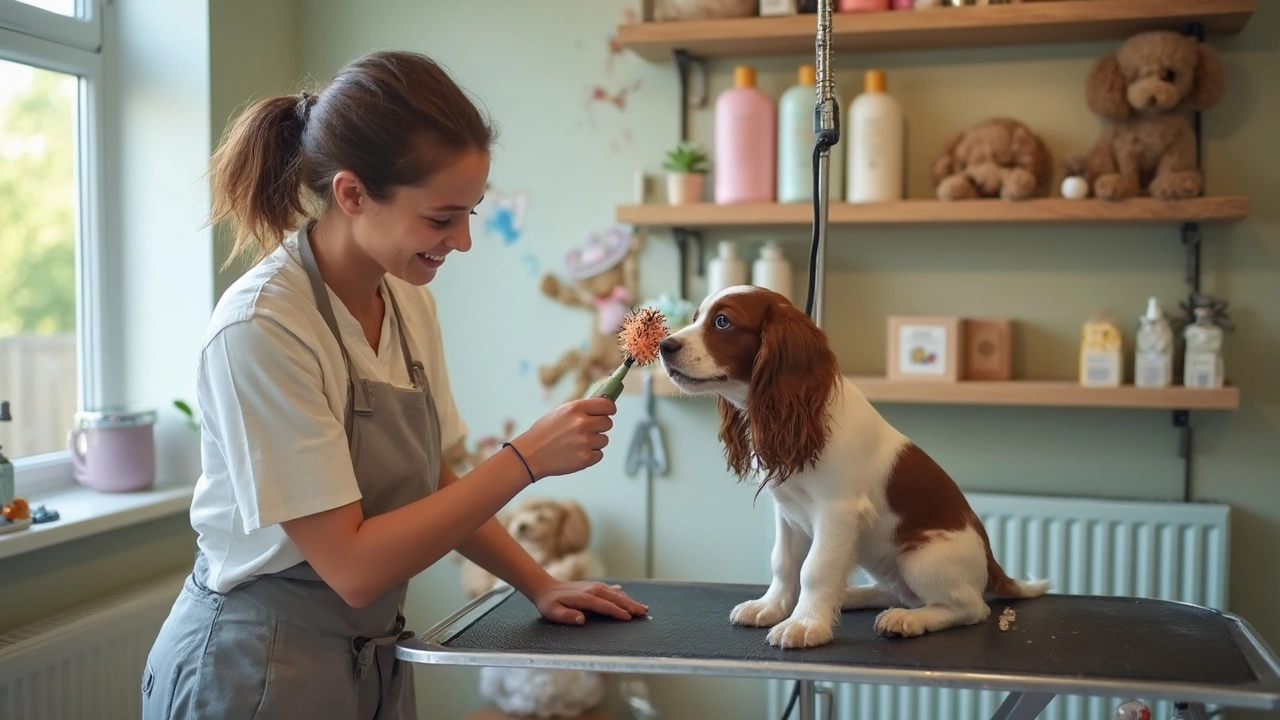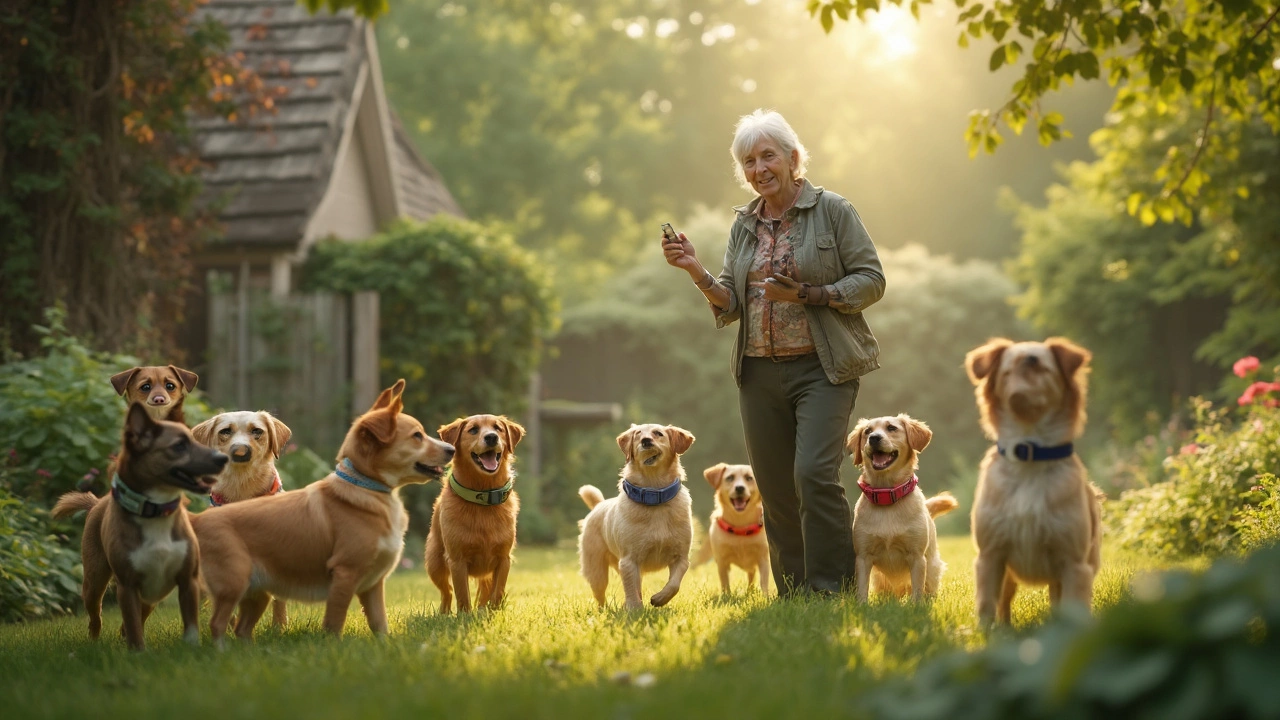Dog Behavior: Simple Tips to Keep Your Pup Happy
Ever wonder why your dog barks at the mail carrier or why a puppy keeps chewing everything? You’re not alone. Most owners face a few common behavior puzzles, and the good news is they usually have easy fixes. Below you’ll find clear, step‑by‑step advice that works for most dogs, no matter the size or age.
Common Behavior Challenges
First, let’s sort out the biggest culprits. Barking, chewing, jumping, and pulling on the leash are the top complaints. Barking often starts because the dog is scared, bored, or trying to protect its space. Chewing shows up when a puppy’s teeth are sore or when there’s nothing else to gnaw on. Jumping is usually a way to get attention, and pulling happens when the dog wants to move faster than you do.
If you’ve read our post “What Really Stops Dogs From Barking? Proven Ways to Calm Barking Without Harsh Collars,” you already know that matching the cause is key. Try a short walk before you’re home, give a puzzle toy, or teach a “quiet” cue with treats. The same idea works for chewing: provide a safe chew toy, rotate it often, and praise your pup when it chooses the right item.
For puppy-specific issues, check out “Effective Ways to Teach Your Puppy ‘No’ – Positive Puppy Training Tips.” The trick is to say “no” in a calm voice, redirect the puppy to a good activity, and reward the right choice right away. Consistency matters more than the exact word you use.
Positive Ways to Shape Good Habits
Now that you know the problems, here’s how to build better habits. Start with a short training session—five minutes is enough. Pick one cue, like “sit,” and practice it multiple times a day. When your dog gets it right, give a tasty treat from our line of natural dog treats. The reward makes the behavior stick.
Leash pulling can be tamed by stopping whenever the dog lunges. Stand still, wait for a loose leash, then continue walking. This teaches the dog that pulling doesn’t get them where they want to go. If you need extra help, our article “Best Dog Training Collars: What the Pros Recommend in 2025” reviews humane tools that can reinforce training without hurting your pup.
Remember to keep training fun. Dogs learn best when they’re excited, not scared. Use a happy voice, keep sessions brief, and end on a positive note. If a session goes poorly, simply pause and try again later. Over time, the good behaviors become a habit, and the bad ones fade.
Finally, don’t forget the power of routine. Feed, walk, and play at the same times each day. Predictable schedules reduce anxiety, which often shows up as barking or destructive chewing. Pair a consistent routine with occasional health checks—sometimes a hidden ear infection or dental issue can trigger unwanted behavior.
Got a specific question? Browse our related posts on barking, puppy training, and health. You’ll find checklists, quick answers, and real‑world tips that you can start using today. With a little patience and the right treats, you’ll see big improvements in your dog’s behavior and enjoy a calmer, happier home.

Does Letting Your Dog Sleep in Your Bed Cause Separation Anxiety?
Letting your dog sleep in your bed doesn't cause separation anxiety. The real issue is emotional dependence and fear of being alone. Learn how to tell the difference and what actually helps.
View more
How Long Should Dog Training Sessions Last? Expert Tips and Timing Guide
Curious how long dog training sessions should be for real results? Unwrap the science, practical tips, and timing secrets for training dogs of any age and breed.
View more
Do Dogs Sleep with the Alpha Human? The Truth Behind Bedtime Bonding
Ever wondered why your dog chooses to sleep with you and not someone else in the house? This article unpacks the reasons behind dogs picking their favorite human at bedtime and what it says about their view of you as the 'alpha.' Get practical tips for encouraging healthy sleep routines, whether you want your furry buddy in your bed or cozily settled in their own. Learn how sleeping arrangements connect to your dog's trust and sense of security. We’ll also debunk some myths about the whole 'alpha human' idea.
View more
How Do Dog Groomers Keep Dogs Still? Pro Tips for Calm, Safe Grooming
Dog groomers deal with everything from wiggly puppies to nervous older dogs, so keeping dogs still can feel like a magic trick. This article reveals the real-world techniques groomers use—from specialized tools to clever distractions—to make the process safe and low-stress. You'll learn why staying calm matters, how grooming tables really work, and what pet owners can do to help dogs chill out. Plus, discover practical tips you can try at home. Whether your dog loves or hates baths, you'll find advice to make grooming easier for everyone.
View more
Do Vets Recommend E-Collars for Dogs?
Curious if vets really suggest e-collars for dog training? This article walks you through the facts, the real opinions from veterinary professionals, and the situations where they might or might not give the green light. It also covers safety tips and humane alternatives you can try. Whether your pup’s barking is out of control or you’re looking for safer ways to train, you’ll get practical answers here. Your dog’s comfort and well-being are front and center.
View more
Why Dogs Choose Your Bed Over Their Own
Ever wonder why your dog prefers snuggling in your bed instead of its own cozy space? Discover the reasons behind this adorable habit and what it says about your furry friend’s behavior. Explore how companionship, anxiety, and warmth play a role in your dog's bedtime choices. Get handy tips on creating a perfect sleeping environment for your pet. Understand your dog’s needs while keeping your own comfort in check.
View more
Are Vibrating Collars Good for Dogs? Exploring Your Options
Vibrating collars for dogs are a popular training tool, especially for hearing-impaired pets. They provide a gentle way to get a dog's attention without using shock therapy. While effective for some behavioral issues, it's important to understand the nuances and benefits of using these collars before deciding if it's the right choice for your furry friend. This article unpacks the pros and cons, tips for usage, and considerations to keep in mind.
View more
Do Dog Calming Collars Really Ease Anxiety?
Calming collars for dogs have emerged as a popular remedy aimed at easing anxiety and stress in pets. These collars often contain pheromones or natural essential oils designed to promote relaxation. This article explores the effectiveness of dog calming collars and reviews various options, guiding pet owners in choosing the right product for their furry companions. It also offers insightful tips on using these collars to help manage canine anxiety.
View more
Understanding Your Dog's Paw Gestures: What It's Telling You
When your dog places their paw on you, it's more than just a random touch. This gesture can convey a range of emotions and desires, from affection to playfulness. Understanding these signals helps deepen the bond with your furry friend. This article explores the meanings behind different paw interactions, providing insights into your dog's behavior and tips on choosing the best dog bed to support their physical comfort.
View more